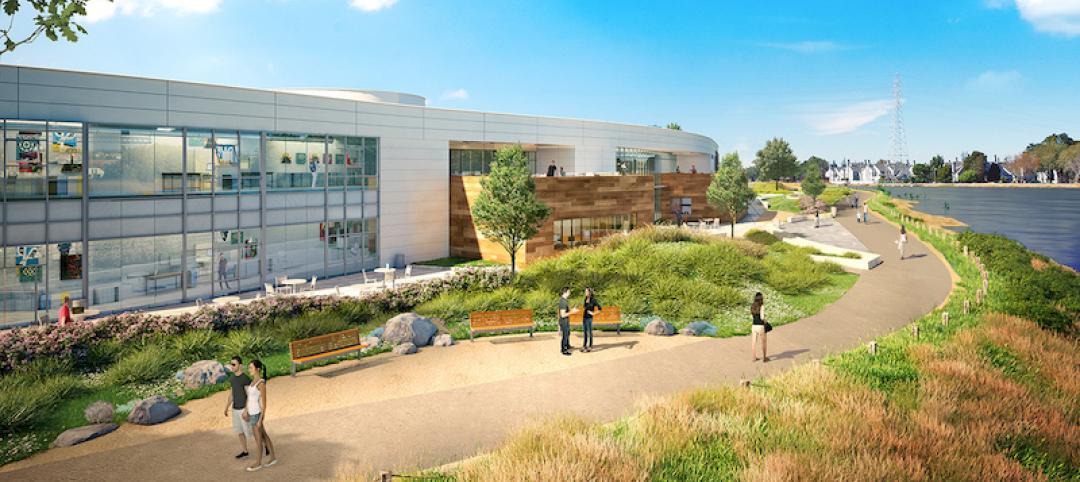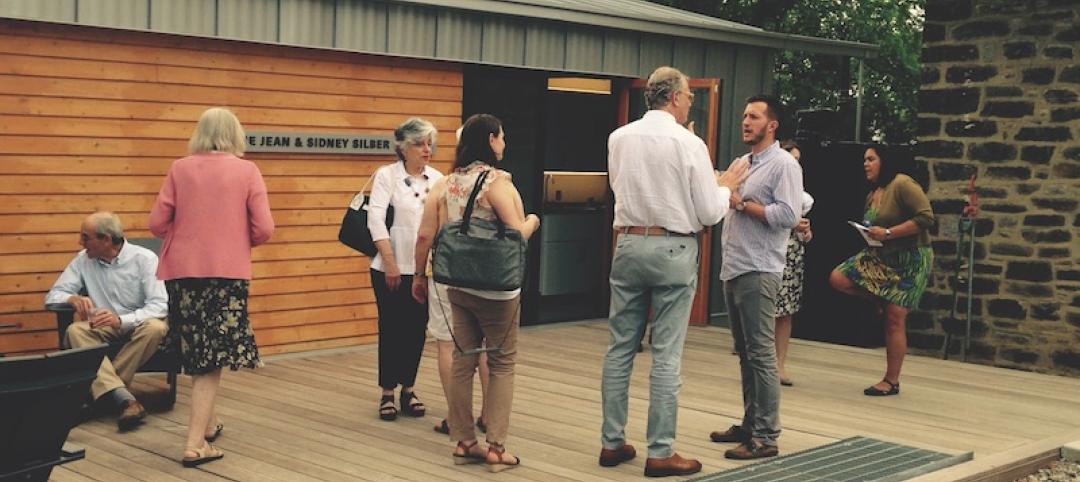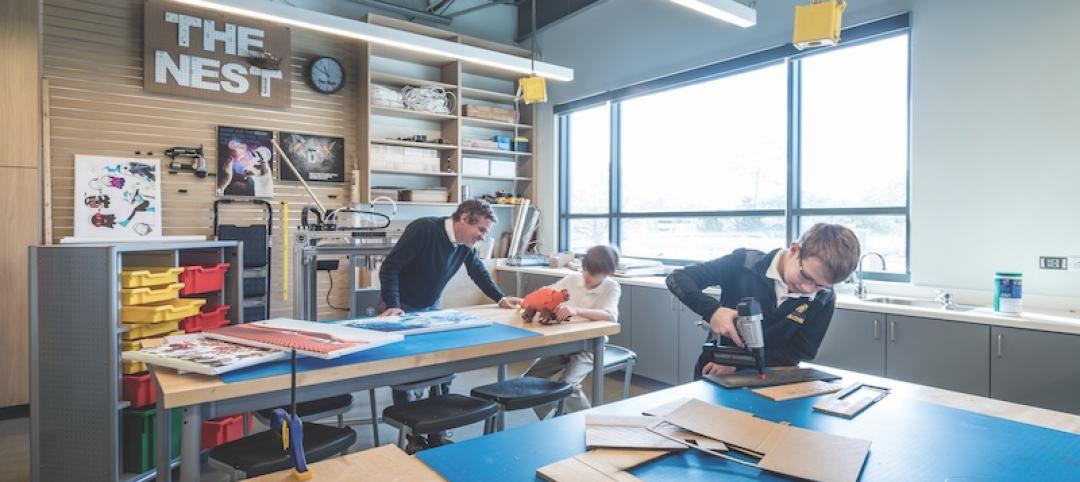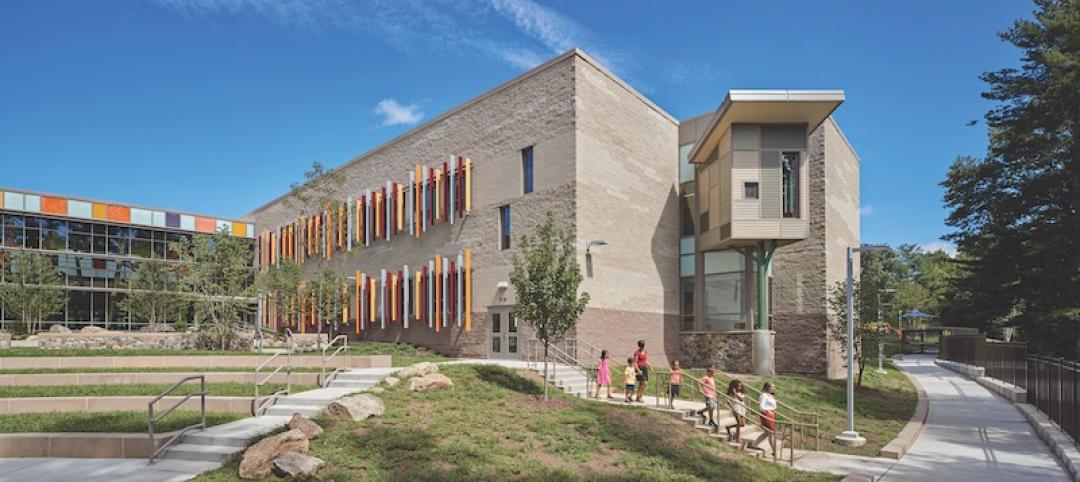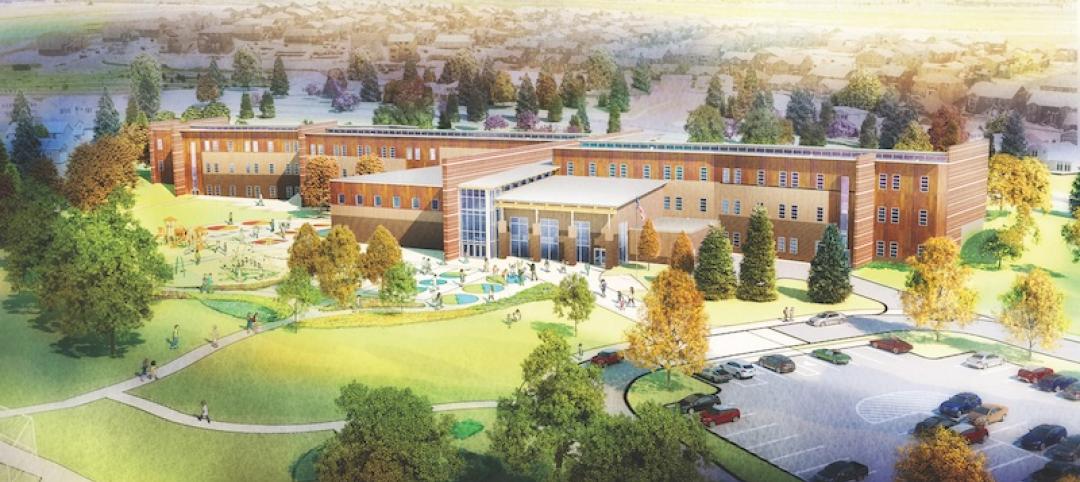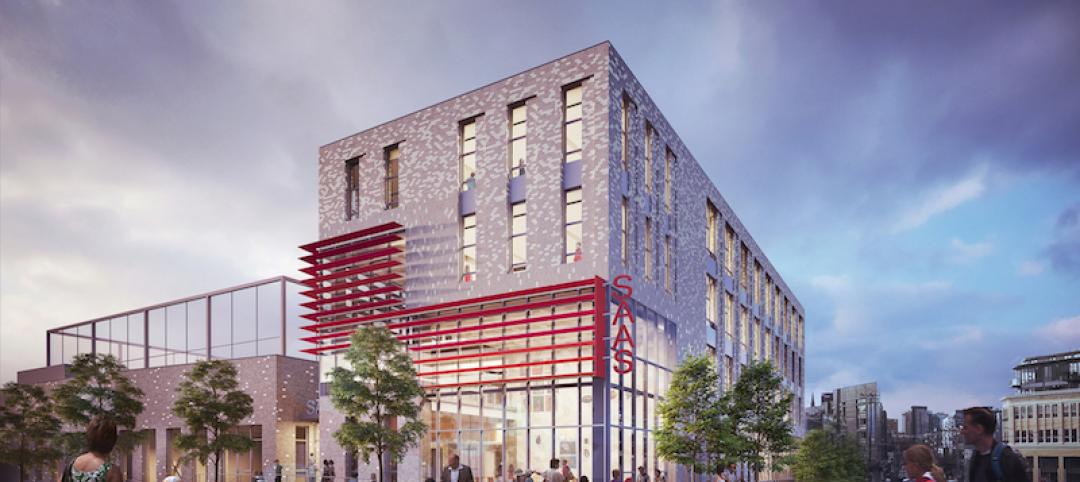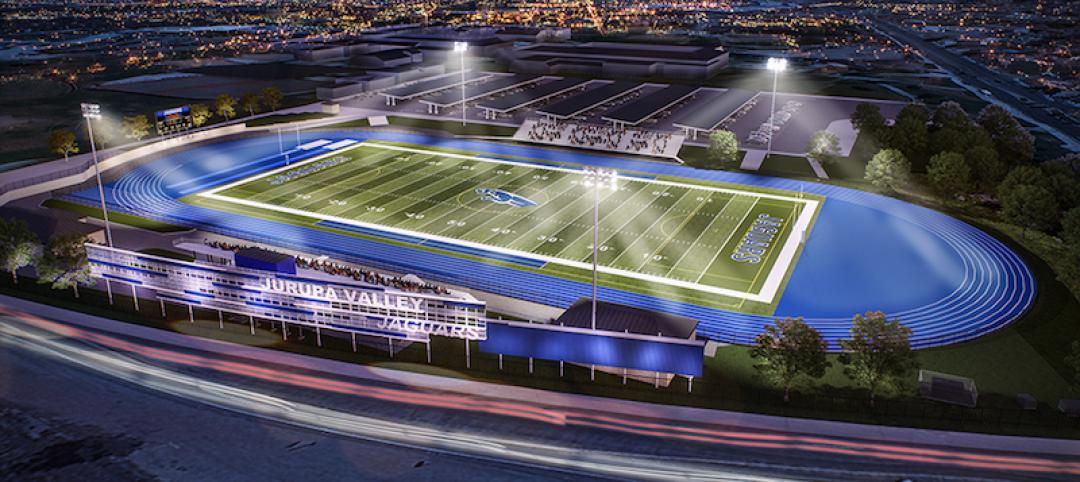 |
|
Students gather at the entrance to the new high school, which incorporates both new construction (above) and adaptive reuse of three vacant buildings. |
The story of the Trenton Daylight/Twilight High School is one of renewal and rebirth—both of the classic buildings that symbolize the city's past and the youth that represent its future.
The $39 million, 101,000-sf urban infill project locates the high school—which serves recent dropouts and students who are at risk of dropping out—within three existing vacant buildings. Twin, five-story structures that date to the early 20th century serve as bookends for the new campus, which also takes in a new three-story building and an open plaza in a secured courtyard.
The Building Team, led by general contractor Joseph Jingoli & Son and architect USA Architects, had to deal with existing buildings found to be structurally unstable and “squeezing” mechanical systems into the historic buildings. Working closely with the city and residents led to the inclusion of amenities like a 9,000-sf community room. The project also achieved a high level of community participation: 56% of construction dollars were awarded to minority- and women-owned companies, small business enterprises, or local companies.
“This high school project is very impressive,” said Walker C. Johnson, FAIA, principal with Johnson Lasky Architects, Chicago, and honorary chair of BD+C's Reconstruction Awards judging panel. “With Trenton being in a severely disadvantaged part of the country, the strong emphasis on high school education and rehabilitation of community buildings is extremely valuable.” —Dave Barista, Managing Editor
Related Stories
K-12 Schools | Aug 9, 2017
A school in Denmark is clad in 12,000 solar panels
C.F. Møller designed the building to create a connection between the school premises and the surrounding public urban space.
K-12 Schools | Aug 1, 2017
This new high school is the first to be built on a tech company’s campus
Design Tech High School, located on Oracle Corporation’s Headquarters campus, will span 64,000 sf across two stories and have a capacity of 550 students.
Education Facilities | Jul 14, 2017
Youth education center in Baltimore gets first students
Students learn environmental skills, natural resource management, urban agriculture, and water quality monitoring.
Great Solutions | Jul 12, 2017
The writing on the wall: Maker spaces encourage students to take an active role
Maker spaces, dry-erase walls, and flexible furniture highlight Kinkaid’s new Learning Center.
Building Team Awards | Jun 7, 2017
Rebuilding to heal: Sandy Hook Elementary School
Gold Award: Community involvement was paramount as Newtown, Conn., replaced the school where a mass shooting occurred.
K-12 Schools | Jun 5, 2017
PK-8 school will be Denver’s first CHPS-certified building
A “learning stair” will connect the cafeteria to the main level.
K-12 Schools | May 31, 2017
NAC Architecture rolls out ‘Hack Your Classroom’ campaign
In collaboration with room2learn, NAC launched a campaign aimed at crowd-sourcing information on what teachers are doing in their classroom to improve the learning experience.
K-12 Schools | May 16, 2017
The future of schools: Net zero should be the norm
Students are helping drive change by focusing on the future.
K-12 Schools | May 1, 2017
Seattle’s first vertically-oriented middle school breaks ground
The building will provide 74,289 sf of space across its five-story classroom bar.
K-12 Schools | Apr 21, 2017
The stadium effect
School districts that invested in their athletic facilities over the last few years have seen a tremendous increase in student morale and health, growth in campus culture, and excitement within their communities.



